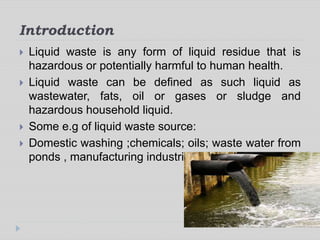10 Easy Facts About Reclaim Waste Described
10 Easy Facts About Reclaim Waste Described
Blog Article
Everything about Reclaim Waste
Table of ContentsThe Single Strategy To Use For Reclaim WasteThe Greatest Guide To Reclaim WasteThe 9-Minute Rule for Reclaim WasteThe 10-Minute Rule for Reclaim WasteReclaim Waste Fundamentals Explained
Domestic sewer waste refers to the waste and items from a property septic storage tank. The proper management and disposal of domestic sewage waste need fluid waste to be moved to a sewer treatment plant where the correct methods and equipment are used to detoxify and dispose of waste.
Business waste commonly consists of potential dangers, such as combustible products or a mixture of fluid and solid waste products, and needs an advanced and comprehensive disposal procedure. The disposal of commercial waste normally involves the filtering of waste prior to transportation to make sure risk-free and proper disposal. Hazardous waste is produced from results and drainage of commercial procedures and manufacturing.
This type of waste can not utilize the same sewer administration transportation or procedures as septic or business liquids. The hazardous waste administration process needs the evaluation and testing of fluid waste prior to it undergoes the disposal procedure (liquid waste removal melbourne). Overflow waste is the fluid waste that originates from overflow and excess stormwater in very populated areas or cities
Runoff waste can trigger contamination and flooding otherwise taken care of appropriately. Find out extra concerning sewer cleaning and waste management. Making sure proper waste management can stop calamities and lower ecological harm. Both individuals in residential settings and professionals in business or production sectors can benefit from understanding the processes and regulations of liquid waste management.
An Unbiased View of Reclaim Waste
Contact PROS Solutions today to learn more about our waste monitoring and disposal solutions and the proper means to care for the liquid waste you create.
(https://issuu.com/reclaimwaste1)Do you understand what happens to your water when you disengage, flush the toilet or drain the cleaning device? No? Well, it's worth understanding. This so-called 'wastewater' is not only a crucial source however, after therapy, will be released to our land, waterways or the sea. Used water from commodes, showers, bathrooms, cooking area sinks, washings and commercial procedures is referred to as wastewater.

water utilized to cool down machinery or tidy plant and equipment). Stormwater, a type of wastewater, is overflow that streams from farming and city locations such as roof coverings, parks, gardens, roads, courses and gutters right into stormwater drains, after rainfall. Stormwater flows neglected straight to local creeks or rivers, at some point reaching the sea.
The Best Guide To Reclaim Waste
In Queensland, a lot of wastewater is treated at sewer therapy plants. Wastewater is carried from domestic or industrial sites through a system of sewers and pump stations, understood as sewage reticulation, to a sewage therapy plant. City governments construct, preserve and operate most sewage therapy plants. Operators are licensed under the Environmental Protection Act 1994 to release treated wastewater at an acceptable environmental criterion into waterways.
The Division of Natural Resources recommends neighborhood federal governments about handling, operating and preserving sewerage systems and treatment plants. In unsewered areas, city governments may need owners to mount individual or home sewer treatment systems to treat residential wastewater from bathrooms, cooking areas, restrooms and laundries. The Division of Natural Resources authorises the usage of family systems when they are proven to be reliable.
The majority of stormwater receives no treatment. In some new class, treatment of some stormwater to get rid of clutter, sand and gravel has started utilizing gross toxin traps. Wastewater therapy happens in 4 stages: Eliminates strong matter. Larger solids, such as plastics and other items wrongly released to sewers, are removed when wastewater is passed via displays.
Wastewater after that streams into huge storage tanks where solids resolve and are removed as sludge. Grease and residue are skimmed from the surface. Makes use of little living microorganisms referred to as micro-organisms to damage down and get rid of remaining dissolved wastes and fine fragments. Micro-organisms and wastes are integrated in the sludge. Gets rid of nitrogen and phosphorus nutrients that might create algal flowers in our waterways and intimidate aquatic life.
The Buzz on Reclaim Waste
Nutrient elimination is not readily available at all sewer treatment plants due to the fact that it requires expensive specialized equipment. Clear fluid effluent created after therapy might still contain disease-causing micro-organisms - liquid waste disposal.

Most wastewater flows into the sewage system. Under the Act, regional governments carry out authorizations and permits for environmentally relevant activities (Periods) entailing wastewater releases that may have a neighborhood impact.
Some Of Reclaim Waste
Or else, examples are considered lab analysis. Usually numerous tests are required to establish the levels of each of the various contaminants such as oils, click for source hefty steels and pesticides in water. Surveillance provides factual information concerning water top quality and can verify that permit conditions are being met. The info gotten with monitoring gives the basis for making water top quality decisions.
Report this page